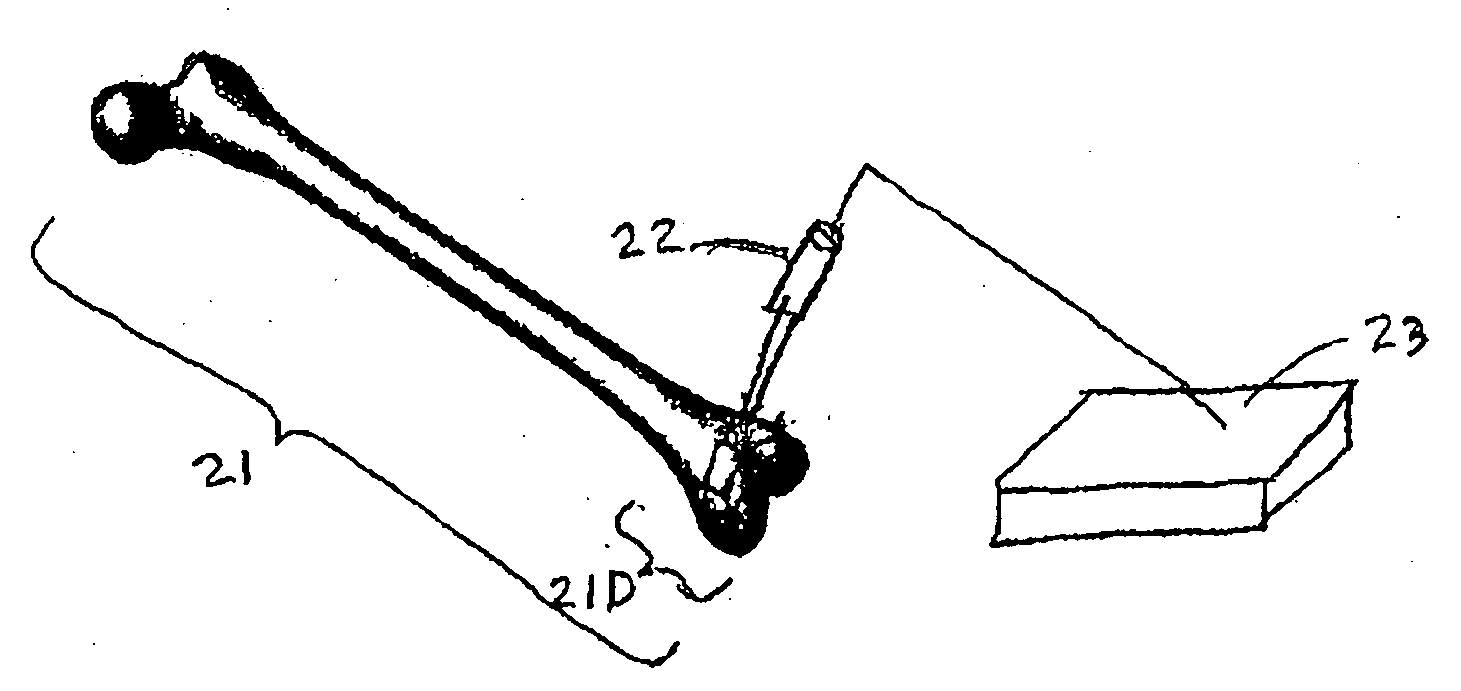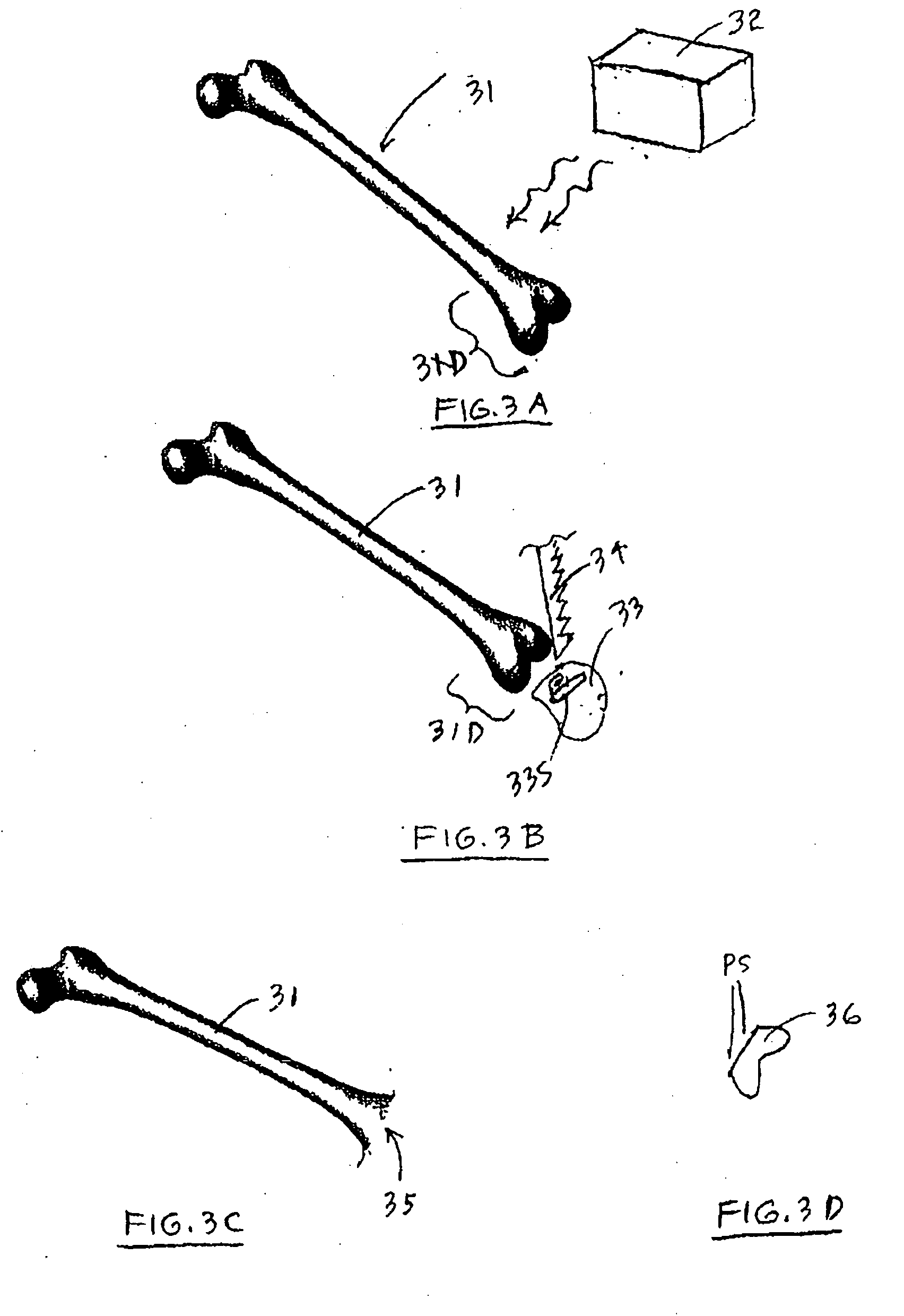Total joint arthroplasty system
a total joint and arthroplasty technology, applied in the field of value added medical devices, can solve the problems of lack of micron-level geometric accuracy, many surgeons are unable to exert a precise, predefined force in a selected direction, and surgeons have limitations, so as to reduce the additional expenditure of capital equipment purchases, improve the surgical time, and ensure the accuracy of cutting.
- Summary
- Abstract
- Description
- Claims
- Application Information
AI Technical Summary
Benefits of technology
Problems solved by technology
Method used
Image
Examples
Embodiment Construction
[0033]1) System Architecture
[0034]In a preferred embodiment, the invention provides accurate positioning and alignment of an orthopedic implant without a significant increase in surgical time or capital equipment cost. Also, during the actual surgery, the system does not require use of registration, image matching or location tracking, which distinguishes the invention from other image-based systems.
[0035]FIGS. 3A, 3B, 3C and 3D illustrate some features of the invention. A damaged region 31D of a target bone 31 undergoes CT scan in FIG. 3A. Pre-operative planning is performed, using a computer and a CT image scanner 32, to construct a model of bone suffices adjacent to the damaged region 31D, with an associated inaccuracy of no more than 90 μm. Based on the accumulated planning data, a production file is created to receive the CT image data and to fabricate a jig or cutting block and, optionally, an implant device. The production file and the planning information are sent to the pro...
PUM
 Login to View More
Login to View More Abstract
Description
Claims
Application Information
 Login to View More
Login to View More - R&D
- Intellectual Property
- Life Sciences
- Materials
- Tech Scout
- Unparalleled Data Quality
- Higher Quality Content
- 60% Fewer Hallucinations
Browse by: Latest US Patents, China's latest patents, Technical Efficacy Thesaurus, Application Domain, Technology Topic, Popular Technical Reports.
© 2025 PatSnap. All rights reserved.Legal|Privacy policy|Modern Slavery Act Transparency Statement|Sitemap|About US| Contact US: help@patsnap.com



